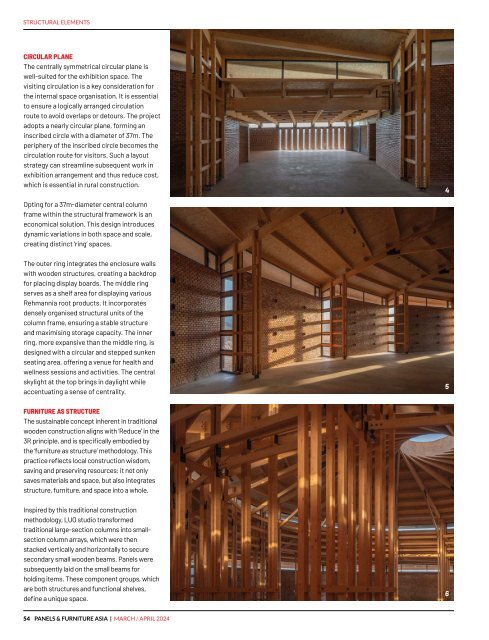Panels & Furniture Asia March/April 2024
Panels & Furniture Asia (PFA) is a leading regional trade magazine dedicated to the woodbased panel, furniture and flooring processing industry. Published bi-monthly since 2000, PFA delivers authentic journalism to cover the latest news, technology, machinery, projects, products and trade events throughout the sector. With a hardcopy and digital readership comprising manufacturers, designers and specifiers, among others, PFA is the platform of choice for connecting brands across the global woodworking landscape.
Panels & Furniture Asia (PFA) is a leading regional trade magazine dedicated to the woodbased panel, furniture and flooring processing industry. Published bi-monthly since 2000, PFA delivers authentic journalism to cover the latest news, technology, machinery, projects, products and trade events throughout the sector. With a hardcopy and digital readership comprising manufacturers, designers and specifiers, among others, PFA is the platform of choice for connecting brands across the global woodworking landscape.
You also want an ePaper? Increase the reach of your titles
YUMPU automatically turns print PDFs into web optimized ePapers that Google loves.
STRUCTURAL ELEMENTS<br />
CIRCULAR PLANE<br />
The centrally symmetrical circular plane is<br />
well-suited for the exhibition space. The<br />
visiting circulation is a key consideration for<br />
the internal space organisation. It is essential<br />
to ensure a logically arranged circulation<br />
route to avoid overlaps or detours. The project<br />
adopts a nearly circular plane, forming an<br />
inscribed circle with a diameter of 37m. The<br />
periphery of the inscribed circle becomes the<br />
circulation route for visitors. Such a layout<br />
strategy can streamline subsequent work in<br />
exhibition arrangement and thus reduce cost,<br />
which is essential in rural construction.<br />
4<br />
Opting for a 37m-diameter central column<br />
frame within the structural framework is an<br />
economical solution. This design introduces<br />
dynamic variations in both space and scale,<br />
creating distinct ‘ring’ spaces.<br />
The outer ring integrates the enclosure walls<br />
with wooden structures, creating a backdrop<br />
for placing display boards. The middle ring<br />
serves as a shelf area for displaying various<br />
Rehmannia root products. It incorporates<br />
densely organised structural units of the<br />
column frame, ensuring a stable structure<br />
and maximising storage capacity. The inner<br />
ring, more expansive than the middle ring, is<br />
designed with a circular and stepped sunken<br />
seating area, offering a venue for health and<br />
wellness sessions and activities. The central<br />
skylight at the top brings in daylight while<br />
accentuating a sense of centrality.<br />
5<br />
FURNITURE AS STRUCTURE<br />
The sustainable concept inherent in traditional<br />
wooden construction aligns with ‘Reduce’ in the<br />
3R principle, and is specifically embodied by<br />
the ‘furniture as structure’ methodology. This<br />
practice reflects local construction wisdom,<br />
saving and preserving resources; it not only<br />
saves materials and space, but also integrates<br />
structure, furniture, and space into a whole.<br />
Inspired by this traditional construction<br />
methodology, LUO studio transformed<br />
traditional large-section columns into smallsection<br />
column arrays, which were then<br />
stacked vertically and horizontally to secure<br />
secondary small wooden beams. <strong>Panels</strong> were<br />
subsequently laid on the small beams for<br />
holding items. These component groups, which<br />
are both structures and functional shelves,<br />
define a unique space.<br />
6<br />
54 PANELS & FURNITURE ASIA | MARCH / APRIL <strong>2024</strong>

















